Improve your green screen
all the info and tools you need to create great green screen videos
Which is the Best Green Screen Background?
In my green screen background comparison video on youtube, I compared four different backgrounds for different room sizes and budgets.
Which should you choose? Cloth/fabric, background systems like the westcott x-drop, paper rolls, or green screen paint?
I show you all the pros and cons of each option by using them live and also give you my side by side test results.
Below you see the tools that I used. The links are affiliate links. Purchasing from them will help me maintain this website and produce more Youtube videos.
Green Screen Backgrounds
Not the best option, but rather affordable. If you get a set with different background colours, you can use the fabric of the other colours to improve the sound in your studio. I talk about that in my second video blow.
DON’T get a kit complete with lights unless your budget is extremely tight. The light of these kits is very weak and won’t give you the control you need for great results.
Scroll down for lighting recommendations.
Amazon: https://amzn.to/3m8n4jG
Westcott X-Drop KIT (5′ x 7′)
Westcott X-Drop CLOTH ONLY (5′ x 7′)
My preferred green screen background for a small office environment. You can easily hang it on your wall. Drill some hooks into your wall and use the built-in eyelet patches to hang it.
Westcott X-Drop Pro KIT (8′ x 13′)
Westcott X-Drop Pro CLOTH ONLY (8′ x 13′)
Background Paper
Green Screen Paint
Amazon: https://amzn.to/3XUuSpS
Green Screen Mounts, Stands, Hooks and Drives
Probably the most affordable and at the same time very effective is mounting green screen fabric on the wall.
Tarp clips are the best and cheapest option. Just drill some hooks into your wall and use the tarp clip to stretch the fabric. When you don’t need the green screen, use the hooks to hang some pictures on your wall.
NOTE: it requires quite a few mounting points to stretch the fabric without getting wrinkles.
Amazon: https://amzn.to/4ebbPxp
Stands
To stretch green screen fabric on stands, clamps are a must. I recommend going to your hardware store and get some, but if you want to order online, these should work well.
All together you need at least eight clamps. Go for an opening of around 1,5 inch.
Amazon: https://amzn.to/3ZfV4ZV
Single Hooks for Paper Roll
When mounting on the wall, you’ll also need an Auto Drive Set like listed below
Triple Hooks for Paper Roll
These are the hooks I use. They are from Manfrotto. But there are other cheaper alternatives out there.
For paper background I strongly recommend an auto drive set. It unrolls the paper perfectly and helps store it without damage. When you mount the paper on the wall or on autopoles the drive set is mandatory.
I’d recommend getting a metal chain because the plastic ones reportedly break.
Amazon: https://amzn.to/3SvC3Rc
Autopoles
To mount the background on auto poles, you need these clamps. That’s where the hooks below are mounted on.
Amazon: https://amzn.to/3ZgzOTH
If you use auto-poles and super clamps, these hooks mount onto the super clamp, and then you hang the auto drive set above on the hook.
Amazon: https://amzn.to/3lYkg8R
Which is the Best Green Screen Lighting?
Green screen lighting depends a lot on the room size and on your budget. This very detailed video about the best green screen lighting covers everything you need to know. From the very basics to some secret tips that I learned through a lot of experimenting.
I could explain it in a long winded text, but it’s better to watch a video where you clearly see the advantages and disadvantages of each option.
Recommended Green Screen Lighting
The incredible small footprint of these lights make them perfect for small rooms.
They are available in different lengths. I’d recommend the 30″ version.
Being battery powered, having several effects and the ability to control them with an app via Bluetooth (out of the box only the II version) adds to the flexibility of the PavoTubes.
The version two is a bit more expensive, but has some advantages over the first version. So I’d recommend that.
The link below will lead you to a set of two Pavo Tube 30 II, which I’d highly recommend.
Amazon: https://amzn.to/4dyo2et
This monolight is not only perfect as a background and a rim light. It is pretty affordable, while still high quality and powerful enough (150W) to give you a beautiful bright background.
It is almost silent and offers Bluetooth to control it with an app. That makes the FS-150 not only great for green screen use.
Amazon: https://amzn.to/4ekansr
In case you have some budget left, you could get this light for a rim light. The big advantage vs the FS-150 is that it is an RGB light. So you can get any colour you wish, which helps a lot when you want to blend your green screen clip perfectly into the background. To seen an example for that technique, check the above video.
White Diffusion Gel Filter
This filter will diffuse the light when you light the background separately with a monolight and a standard reflector like the one above on the Nanlite FS-150.
To light the green screen in my video, I used two layers of the sheet that you can easily cut out of this bigger sheet.
Amazon: https://amzn.to/3ZgKNwG
What are the Best Green Screen Camera Settings?
- To improve the evenness of your background, film with either an APS-C sized sensor or set your full frame camera to APS-C.
BUT: use a full frame lens.
That will give you the least amount of vignetting and therefore a more even background. - Don’t forget to enable lens correction in your camera. That will further improve the shading/vignetting in the corners.
- Don’t shoot your lenses wide open (lowest f-number). That would also create substantial vignetting.
f/5.6 is a great compromise (even though that is the lowest setting on cheaper lenses) - For shutter speed, choose 1/100sec or 1/125sec depending on whether you live in Europe or USA (for more info, check Wikipedia for PAL vs NTSC).
- Enable audio signals. While you may turn off your audio signals for regular filming, I recommend to turn it on for green screen work if you film yourself. That way you can make sure that the camera really records. Trust me – I’ve been there and had to reshoot a few scenes just because the camera didn’t record.
The video Best Green Screen Camera Settings explains all the specific camera settings and shows examples why the specific settings work best.
Green Screen Camera and Lens Recommendations
While not cheap, this camera is probably the best bang for the buck when it comes to filming green screen.
Great low light performance (you probably need an ISO of at least 800 to film your green screen) and awesome face detection for perfect focus while walking around in the frame.
Another plus is the tiltable display which is great to have control over the framing when you film yourself.
Amazon: https://amzn.to/3ZyNwSn
Almost as good as its successor the above Sony a7IV, the a7III has a slightly slower focus, and in my experience less accurate face detection for this kind of shooting.
It also lacks the tiltable display, which isn’t a deal breaker though.
The big advantage is the price.
Amazon: https://amzn.to/3xO30pu
Relatively affordable with very good performance and a big range of focal lengths. That way you can get closer and wider shots with ease and still keep the same aperture.
The f/4 aperture is good enough for green screen work because your target aperture should be around f/5.6.
Amazon: https://amzn.to/3SrfJYO
Recommended Green Screen Acessories
The little things that make life easier. Particularly if you are filming yourself.
I have tried all sorts of remotes for above Sony cameras. Infrared, Bluetooth, smartphone, wired,… This is the one solution that is really reliable and extremely comfortable.
I also use a third party knock-off from Pholsy that is not nearly as reliable.
It has a red tally light that shows whether the camera is recording or not. Very convenient and highly recommended.
Amazon: https://amzn.to/3XZ9Kvr
A teleprompter can theoretically make your life much easier. But it takes some practice to not look like a deer in headlights.
The Iloknzi Teleprompter is pretty affordable and very big. Theoretically you don’t need one as big as that, but in case you ever consider using two cameras, like I do (for getting close and wide shots for easier and more interesting edits), then this is a great choice. It requires some DIY work though to get two cameras side by side.
Despite its size, it is very well built and pretty lightweight.
I use it with a 10″ iPad.
Amazon: https://amzn.to/3XZanoN
Green Screen Editing Tips
The best tip I can give you is to use selective keying. Don’t apply the keying effect (e.g. Ultra Key in Premiere Pro) over the complete frame and then raise the sliders of your effect to key out the unevenness in your background.
Instead create multiple instances of the effect on the clip and use masks to apply each instance to only a part of your frame. For example one for the hair, one for the body and one for the darker corners.
Sounds complicated, but is not only incredibly effective with very clean results, it is also pretty easy and extremely fast.
Have a look at the youtube video green screen editing secrets to learn how to use it.
Green Screen Editing Software
Adobe Premiere Pro and its built in chroma keyer “Ultra Key” is a fabulous editor, particularly for green screen. Reason being is that it allows for several instances of the keying effect, which lets you key more aggressively in the corners of the frame and very gentle in areas that need more precision, like hair.
A specific green screen plugin that offers automatic AI tracking of your subject, a built-in primary and secondary key and lots of other tools to blend your clip perfectly into the chosen background.
It is particularly helpful for full body green screen with lots of movement.
Green Screen FAQ
Yes you can, but bad is pretty relative. With a few editing secrets, like selective green screen keying, you can definitely improve your results a lot. Check the video above about green screen editing secrets to see which tools to choose and how to use them.
It is pretty fast and particularly when you have multiple clips, you can easily copy and paste the settings from one clip to all others.
Takes 30sec all together and your green screen has (almost) Hollywood quality.
The best way to improve keying of the hair is to light the background around the hair as even as possible and avoid shadows on the green screen background.
While editing, you can then separately key the hair region and the rest of the video which will improve your results even further. Have a look at the video above about green screen editing secrets.
The reason for that effect is a too dark green screen. If you light your green screen brighter, that problem will disappear.
Let me give you a tip for metering a green screen background: make sure that when you meter the background alone, you get a reading of -1/3 stops for clips that include a lot of skin. And +1/3 stops for people with blonde or light grey hair.
That will give you the perfect background brightness for the desired use case.
The best way to avoid that is by getting as much distance between your subject and the background.
Another (additional) solution is to add a rim light from the back (ideally from both sides).
If you don’t have enough space, or have already recorded your clips, let me recommend having a look at the plugin Hawaiki keyer from fx factory. It is especially great for dealing with green spill.


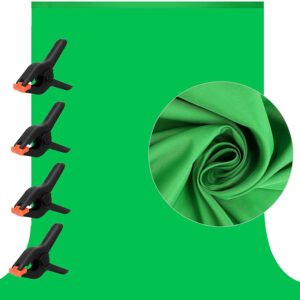

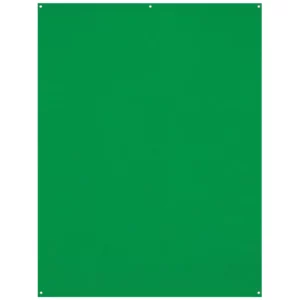
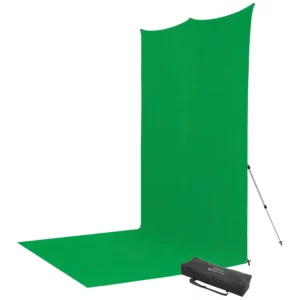

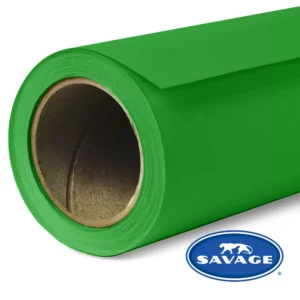
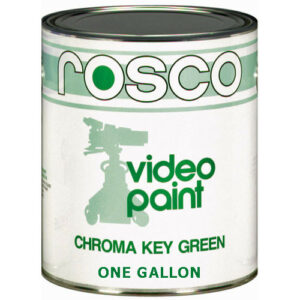
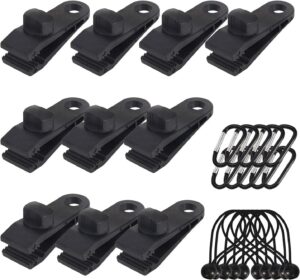
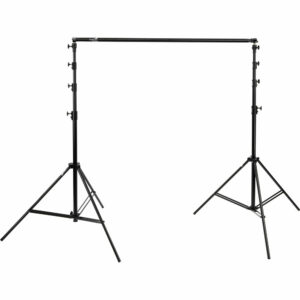
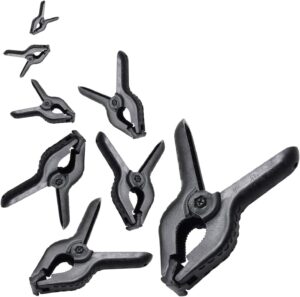
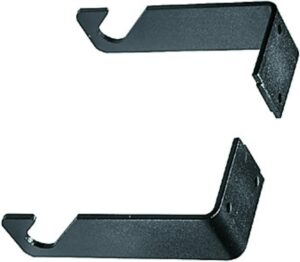
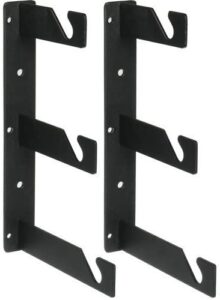

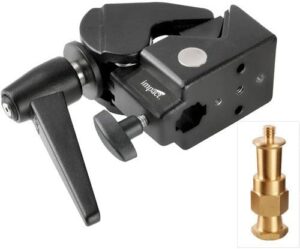

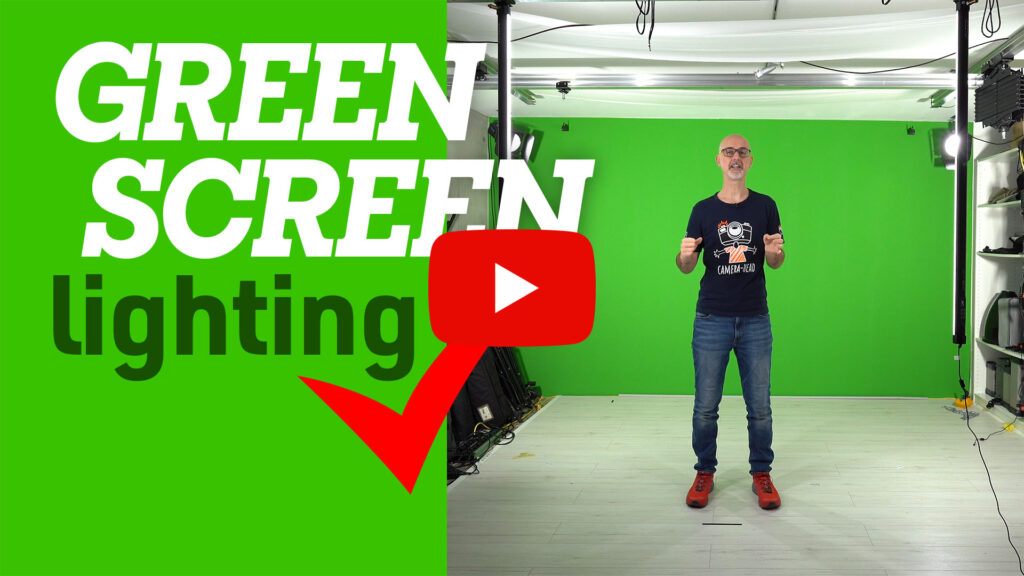
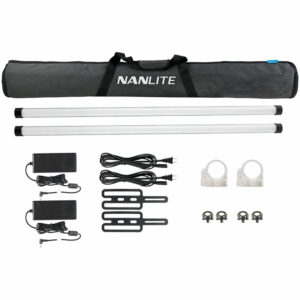
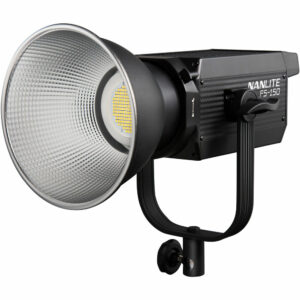
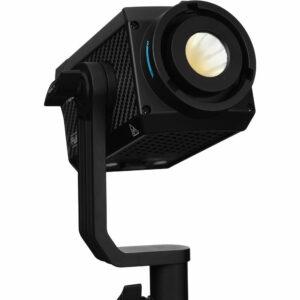

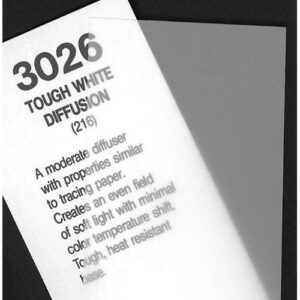
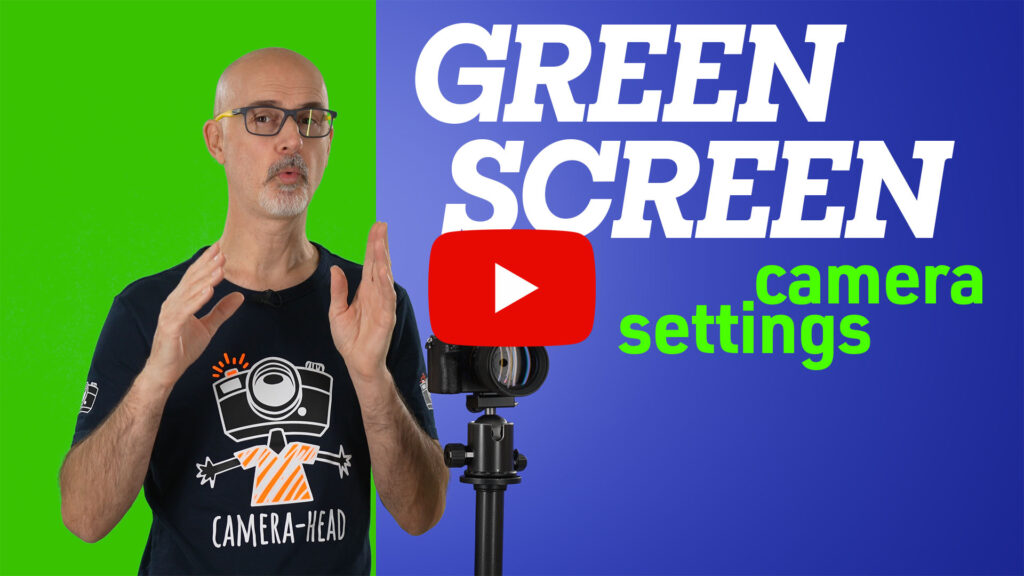

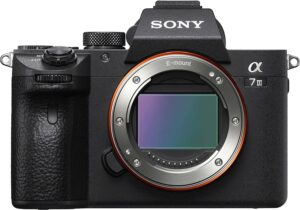

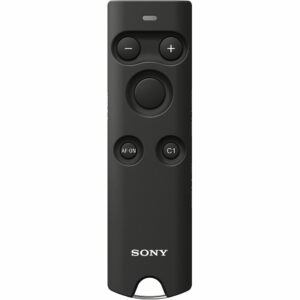
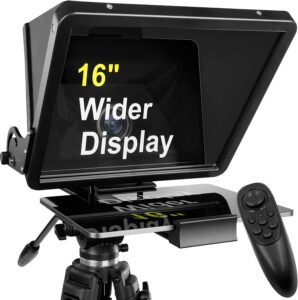

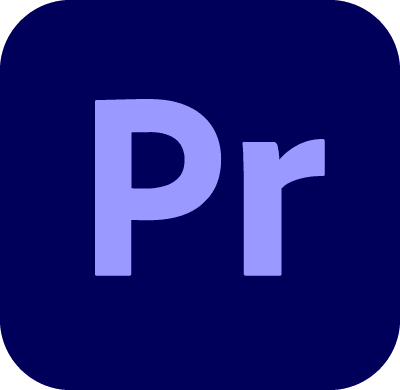

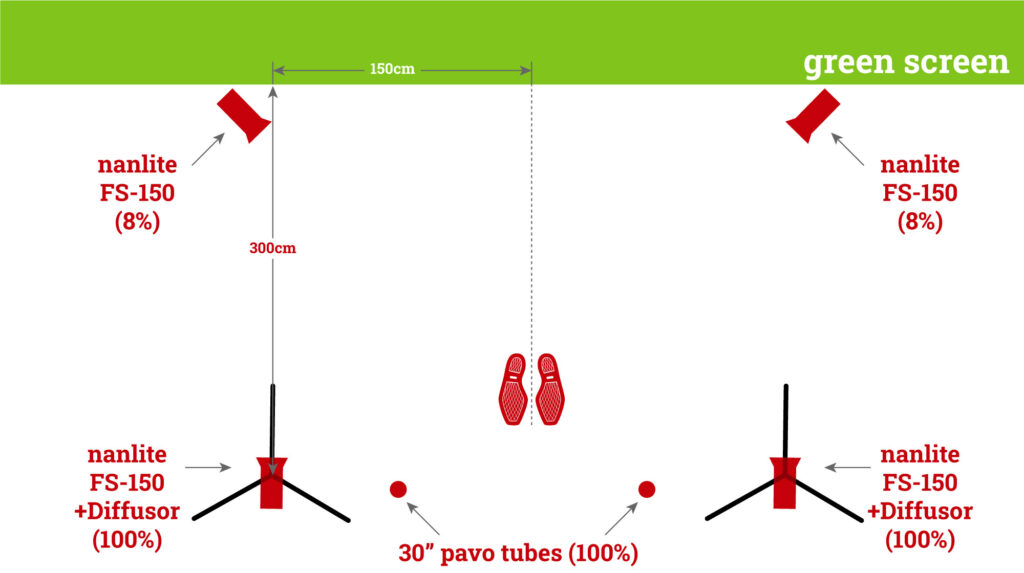
Great tutorial ! Thank You So Much !!!
Just one thing, I would like to know what light meter you use 👍🏻
Hi David! Thank you! I’m using the Sekonic 858, but depending on your needs, that might be overkill ;).
I am loving this information and was about to order but I see the FS-150 lights are out of stock. Do you have another option that would be of comparison?
Thank you Camille, and sorry for the delay. I can’t really give other recommendations of the gear that I use because many of the ones I have used before are discontinued, and the nanlite is really good value for money. There is a bi-color version in case you will ever need the lights for other things than just lighting a green screen. They are now similarly priced to the daylight balanced lights were when I wrote this article. Other than that I heard good things about the smallrigs. I hope that helps 😉
Do you use AC adapter for these sony cameras? Can you share the model number of the adapter?
Thank you!
Hi Kenny,
no, I stopped using Adapters because they created an audio issue for whatever reason. For most Sony cameras you can use a Power Bank and a USB C cable, but in regard to overheating, that is not as good as an AC Adapter. However, against overheating you can use a fan. I’m using this one: https://amzn.to/3z6K75n (that actually holds on the camera), but the slightly cheaper older version also works, but needs some rubber bands to fix it to the camera: https://amzn.to/3MnH7EM
Both will need a power bank if you use them for more than 60-90min.
These are referral links btw, so if you buy from these, I’ll get a small commission. I didn’t get anything from Ulanzi though, I just bought them to avoid the overheating problem.
Do you have any auggestions for a plug in that will work with a PC as well as a Mac? I am interested in the hawaiki keyer but I see it only works with the MacOS. I prefer PC when editing. Thanks!
Hi Cameron,
sorry for the delay! I’m afraid I don’t have a suggestion for PC. I only have an older windows laptop that wouldn’t let me even think about editing greenscreen footage, so I can’t try different tools on it. I hope you find something that fits your needs.
Cheers,
Wolf
Love the content! is there light stands you can recommend for the nanlite FS 150?
also what mounts do you use to cieling mount them?
Sorry for the delay, I missed your question ;). I hope I could answer it ;).
Hi Wolf!,
What light stand do you use for the floor lights? Also I could not find the mounts that work for the Nanlite FS-150 mounted to the ceiling?
Hi Jason! I have a lot of different stands that I gathered over the years – some of them were free byproducts to lights that I bought, some I got as a gift from old photographers (really old fashioned ones). Anything that will hold the light in place is good, even if it is DIY stuff (which is my current ceiling mount as I have it on a ceiling rail). I just googled ceiling mount and found this – should work really well the only question is whether it fits your ceiling height https://www.bhphotovideo.com/c/product/1699194-REG/impact_ls_cm_ceiling_mount_light_stand.html
Regarding regular stands again: indoors it doesn’t really matter as there is no wind going to throw them over, so theoretically you can use the smallest and lightest, even if the Nanlites are heavier than the stands are rated (been there, done that, because I used public transport and didn’t want to carry all the heavy tripods 😉). Only thing is: if you have kids running around at times, you want something more solid.
Let me know if you have any further questions.
Wolf thank you so much for the response! I am well under way setting up my “miniature studio”! your content is great! I am struggling a little bit with my dimensions and light placement, perhaps I will send you some photos when i am complete!
Awesome, I’d definitely love to see your setup ;).
Hi, thanks so much for this resource – it’s brilliant! I’m wondering what kind of dimensions do you mean when you’re talking about a big room, vs medium, and small?
Hi! I explain and show the size in the Green Screen Lighting Video. I hope that helps 😉